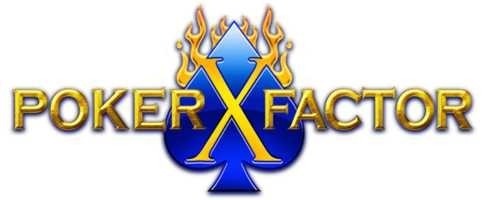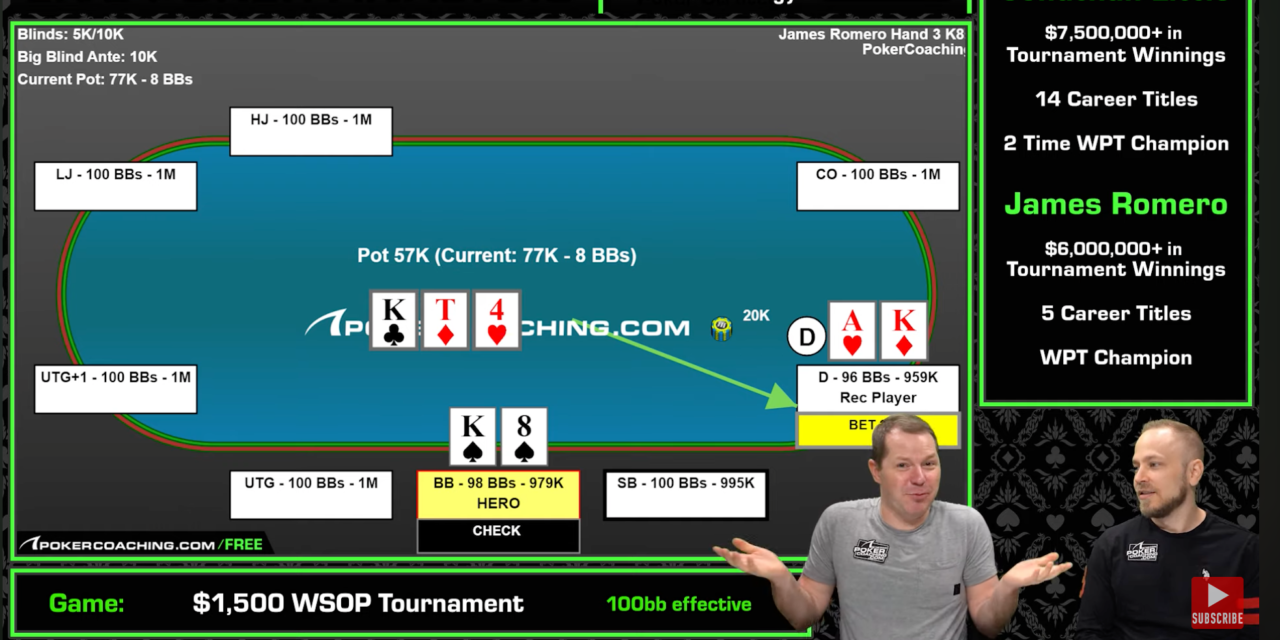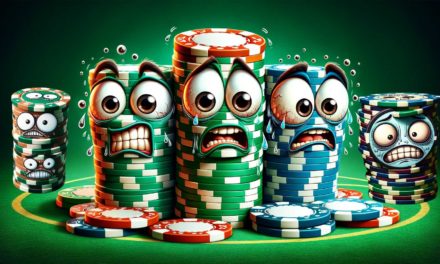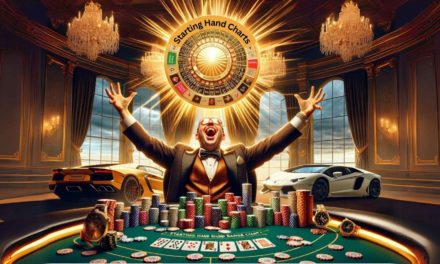
The purpose of the “Amateur Hour: Lost in Translation” blog is to review the teachings of amazing professional poker players and analyze why it can be difficult for amateur players to implement these ideas. This author is most definitely an amateur poker player who sometimes struggles with the “GTO Insanity” that he sees in the game today. Maybe you have the same issues?
Jonathan Little is a legendary poker player and teacher. I love his content and appreciate that he produces so much free analysis for his training site. You should follow him on YouTube and Twitter/X.
The name of the video I’m reviewing is “The BIGGEST BLUNDER Poker Players MAKE!” But the title screen is a little different, it reads: “This is the #1 Blunder People Make with Value Hands.” Watch the full video below. It features a hand played poker pro James Romero, who has $6 million in tournament winnings, in a $1500 WSOP Tournament.
So, let’s review the hand in the video, including Little/Romero’s commentary versus my “amateur hour” thoughts.

It’s a simple setup: Romero is in the big blind with Ks8s and 100 big blinds. The villain, a recreational player, is to his right on the button and also has 100 BBs.
Little/Romero Commentary: Our heroes say that Ks8s is nearly the best hand Romero could have in his “check/calling range.” They state that hands like K10 or KJ should be raised.
Amateur Hour Commentary: This makes perfect sense to me. I often call with this sort of hand in the BB. So far, so good. However, I’m often just calling with K10s as well.
FLOP: Kc Td 4h … Romera has flopped top pair.
Little/Romero: “There’s almost no run out where we’re folding unless it runs off an Ace … so check/call down … easy game.”
Amateur Hour: Mind blown!
Little/Romero continue their commentary by chiding the villain when it is revealed he had AhKd and somehow could not find a way to get all the money in the pot — 100 blinds worth. Romero states he would have called for his tournament life if the button had played it correctly.
Amateur Hour: The first thing that popped into my mind was the post-WSOP dinner with friends and fellow players. A buddy turns to me and asks how I busted 100 big blinds two hours into a WSOP bracelet event. “Must have been a hell of cooler, right? Kings versus Aces?”
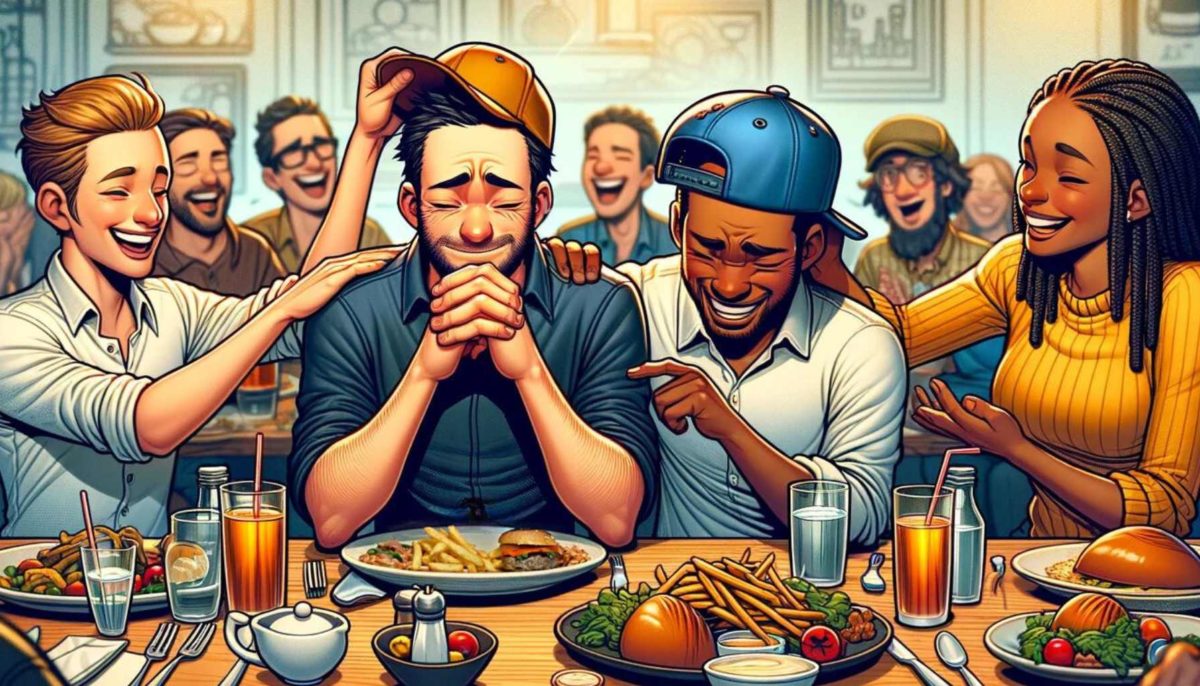
I would try not to answer, but others would notice and pressure me about my bust-out hand. Finally, I would reply: “Well, I woke up with K8 suited and defended my big blind. Then I check/called the flop after I hit top pair, check/called a big bet on the turn after a blank hit, and finally check/called an all-in after another blank. The guy woke up with Ace King. Bad beat.”
My friends would stare at me blankly before one of them recaps what I just said: “Let me get this right, you flew across the country for your one Vegas trip per year, entered a $1500 WSOP tournament with dreams of a bracelet in your head, and check/call your way out defending your big blind with top pair bad kicker 2 hours into the event. Is that right?”
“Yes.”
“Dude, that is some weak a&$ sh!*. Are you just a calling station? Why would you do that?”
“Because Jonathan Little told me so.”
The truth is I don’t like the way Little/Romero would play this hand. In my amateur brain, the correct thing to do is check/raise the flop. And I mean a big, solid check-raise. With such a big raise, AK will shove it all-in right then and there, and then you have a decision to make. And I probably then fold. This is what old timers like me call betting to “see where you are” in a hand.
Is that so wrong?
Well, apparently, yes. I’m not very practiced at GTO solvers, but I went to GTO Wizard and did a sloppy job putting the hand in. But it most definitely agrees with Little/Romero. On a river shove, GTO says you are calling 78.8%.

And knowing this, I’d probably still would not call off my stack with top pair/weak kicker. My thinking is: “Sure, the button’s range is wide, but that doesn’t mean he can’t beat K8. Isn’t K10 just as likely?” Also, I know how to play a shorter stack. It would hurt folding to a shove re-raise, but I would have plenty of opportunities to get it back.
I wonder if Phil Hellmuth would go bust on this hand, as Little/Romero would have. Somehow, I don’t think so, but what do I know?
It seems to me that Little/Romero are playing this hand strictly by GTO standards. We know the button has a wide range, but is he three-barrelling with nothing for 100 BBs that often? Surely, he can beat K8.
Can Little put himself into an amateur’s shoes and find a way not to risk your WSOP tournament life on such a hand? (But maybe that doesn’t matter at all.) Also, if Romero is in a WSOP tournament at a table with a lot of amateurs — which is likely — should he squander his enormous poker advantage on this one hand?
It’s GTO insanity, folks. I prefer exploitative play. But, of course, I’m an amateur. What would you do? Tell us on Twitter.
Final Notes:
- Jonathan Little and James Romero made this video about the recreational player’s mistake of not getting all his money in — not the fact that they would check/call 100BBs with top pair, weak kicker. I get that. If I were the Rec Player in this hand, I’d bet 1/2 pot on the flop (he bet less), half pot on the turn (he bet 1/3), and then I’d have to decide what to do on the river. Playing online, I always think: “Am I folding to a reraise?” In this case, I would not be folding to a reraise in an online tournament, so I just put it all-in. However, to be completely honest, if I’m playing live at the WSOP, I’m worried the big blind had K10, and I’m probably 1/2 potting again and reluctantly calling a re-shove. Just being honest. Little is trying to teach me to play it correctly, like I would in an online tournament.
- I watched Jonathan Little play brilliantly live on PokerGo in a Poker Masters event, eventually going out second in a tough field (and then again later winning the PokerGo Cup!). On the final table, he made two huge calls that kept him at or near the top of the leaderboard. Later, he said: “I don’t like folding.” And I’ve seen him say that many times. So maybe he IS a calling station? I hope so because maybe it means all those hero calls I’ve made in my past were not “historically bad” – as my opponents would sometimes tell me. 😉
- Since writing this article and watching this video about a dozen times, I find myself winning a lot of hands in situations very much like the K8 scenario above (except I’m just check/calling and my opponent isn’t often testing me for my tournament life). But do I call for my World Series of Poker tournament life at the river with the top pair average kicker? Maybe I’ll find out this summer!
Until the next poker lesson I don’t understand,
MentatKing

